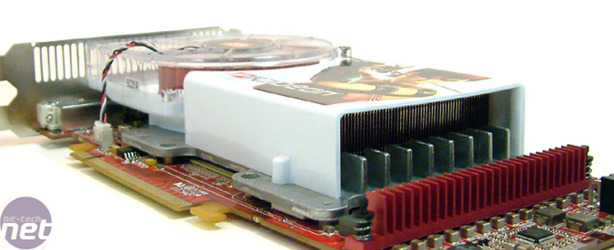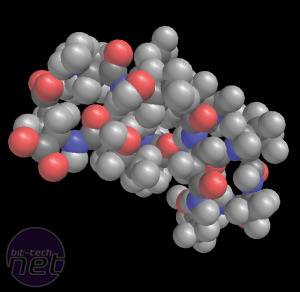What is the best graphics card for folding?
August 5, 2010 | 11:16

What is folding?
Traditionally, the only applications that would benefit from a graphics card upgrade were games and video playback. However, way back in September 2006, Stanford University released a BETA client for its Folding@home project that worked on ATI Radeon X1900-series GPUs.Folding@home is a distributed computing project based at the world-renowned Stanford University in the USA and is used by research scientists to run medical simulations in order to work out how and why proteins (one of the building blocks of life) fold. Folding is the medical term for the process proteins undergo when they interact with each other. Many diseases, such as Alzheimer’s and Mad Cow Disease (BSE), are caused in part by proteins misfolding.
As Martin Gruebele, professor of chemistry, physics, biophysics and computational biology at the University of Illinois says 'Everyone can make a contribution to the research, and your work units are all extremely valuable to the guys at Stanford. This is your chance to be a part of groundbreaking medical science and make your PC a component of the world’s most powerful supercomputer.'
 The first GPUs you could fold on were from the ATI Radeon X1900-series.
The first GPUs you could fold on were from the ATI Radeon X1900-series.GPU folding clients
While the original DirectX-based GPU folding client is no longer in use, Stanford has continued to release new GPU folding clients that are able to take better advantage of the capabilities of modern graphics cards.ATI
 cards can fold using the GPU2 and GPU3 clients, both of which use CAL, rather than DirectX to communicate with your hardware.
cards can fold using the GPU2 and GPU3 clients, both of which use CAL, rather than DirectX to communicate with your hardware.For owners of Nvidia graphics cards you have a choice of two clients: GPU2 and GPU3. GPU2 uses CUDA to talk to GeForce 8, 9 and 200-series cards, but doesn't support the latest Fermi-based cards from the GTX 400-series. For these cards you'll need to use the GPU3 client, which is also backwards compatible with older Nvidia cards.
As it's taken quite a while for Stanford to perfect the GPU3 client and for Nvidia to provide a stable driver for its Fermi-based cards, we thought it worth taking a look at how the new batch of cards perform when folding.
Although you can fold for a few hours at day, you'll really help the project (and therefore medical science) if you leave the folding client running 24\7.
Therefore, in addition to benchmarking each card, we also measured how much power it takes to fold so that you can see how power efficient each card is.
Read on to find how you can help to improve our understanding of some of the world's most hateful medical conditions and speed up the discover of cures.

MSI MPG Velox 100R Chassis Review
October 14 2021 | 15:04








Want to comment? Please log in.